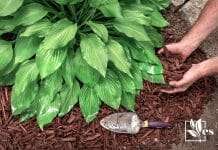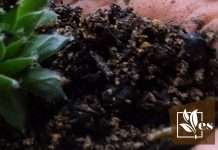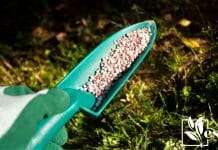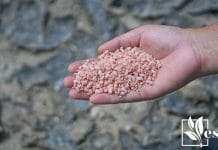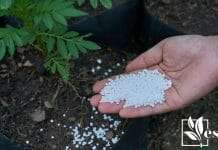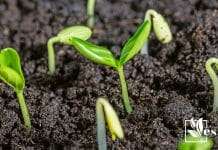- Do Deer Eat Sunflowers: Protecting Your Garden Blooms from Wildlife - March 27, 2024
- How Often to Water Cucumber Plants: Essential Watering Frequency Guide - March 26, 2024
- How Often Do Strawberries Need to Be Watered: Essential Irrigation Tips - March 26, 2024
Improving garden soil is an essential step for any gardener looking to cultivate healthy and bountiful plants. My experience has taught me that soil is not just a static growing medium; it is a living, breathing foundation that requires nurture and adjustment to support plant life. Whether working with heavy clay, sandy, or lifeless topsoil, the goal is to reach a balance of nutrients, structure, and organisms that promote vigorous plant growth.
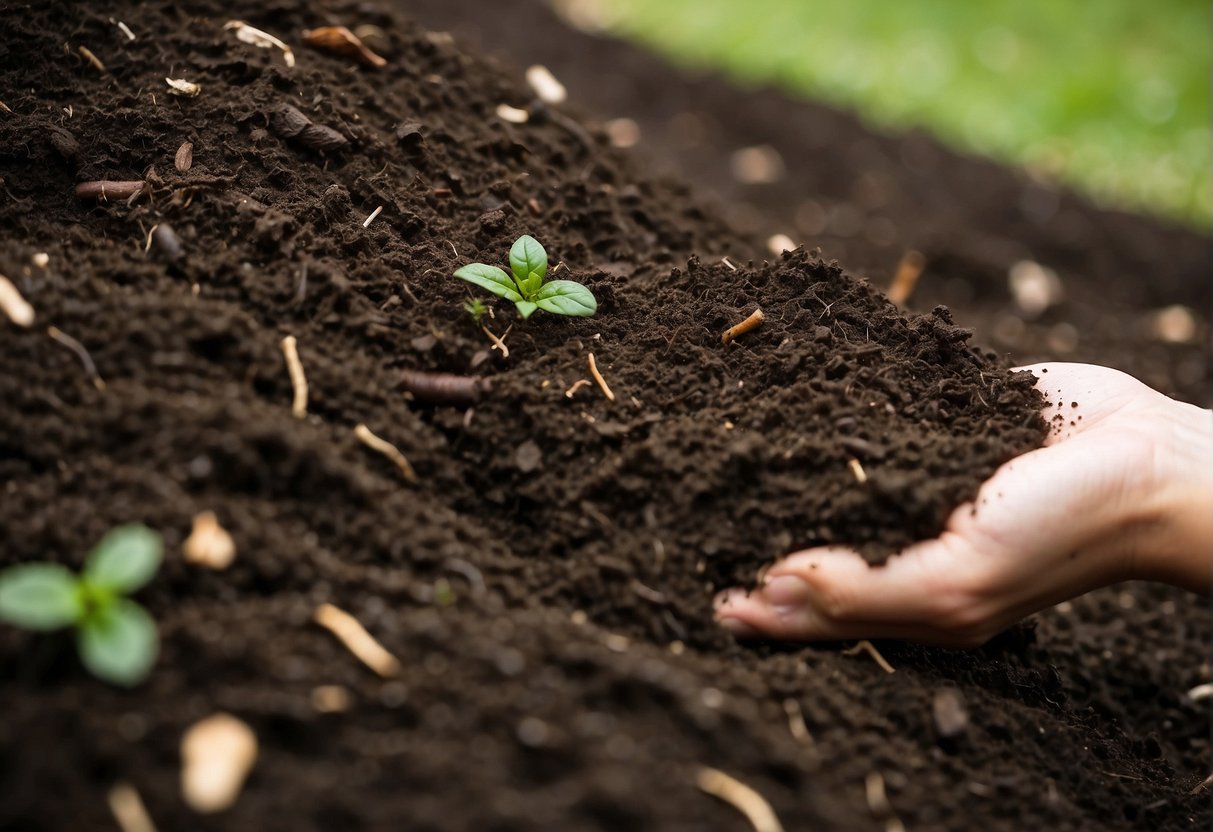
One of my first actions in enhancing garden soil involves incorporating organic matter. This could be compost, which I make at home from kitchen scraps and yard waste, or aged animal manure, which is rich in nutrients. These materials introduce beneficial microorganisms and help improve soil structure, allowing for better root growth and water retention. Additionally, practices such as crop rotation and the use of cover crops play a vital role; not only do they prevent soil depletion, but they also contribute to soil health by adding organic matter and fixing nitrogen when tilled back into the soil before planting the next crop.
Testing the soil regularly helps me target specific imbalances. For instance, adding lime to raise pH or sulfur to lower it ensures that the soil environment is optimal for plant nutrient uptake. By keeping these practices in mind, I’ve seen first-hand how gradually transforming the soil in my garden has led to more robust plants, fewer pest issues, and increased yields—successes that underscore the importance of investing time and effort into soil health.
JUMP TO TOPIC
Essentials of Garden Soil Composition
For robust garden growth, maintaining the ideal soil composition is crucial. It affects everything from water drainage to nutrient availability.
Understanding Soil Structure and Types
Soil structure refers to the arrangement of the soil particles into groups called aggregates. These aggregates provide spaces for air and water, crucial for root growth and microorganism activity. Each type of soil—clay, sandy, loam—has unique characteristics. Clay soils are heavy and retain water well but have poor drainage. Sandy soils are light and have excellent drainage but don’t hold water well. Loam is often considered the ideal garden soil as it has a balanced mix of sand, silt, and clay, offering good drainage and nutrient retention.
- Clay Soil: Heavy, compacts easily, slow drainage
- Sandy Soil: Light, loose, drains quickly
- Loam: Balanced texture, retains moisture, drains well
The Role of pH in Soil Health
Soil pH is a measure of acidity or alkalinity in soil. Most garden plants thrive in a soil pH between 6.0 and 7.0. The pH affects the soil’s microbial activity and the availability of nutrients to plants. If the soil is too acidic (low pH), adding garden lime can raise the pH. Conversely, if the soil is too alkaline (high pH), I can incorporate sulfur to lower it. Regular testing is important since the pH can change over time as the soil amendments break down and are utilized by plants.
pH Adjusters:
- Lime to raise pH (make less acidic)
- Sulfur to lower pH (make more acidic)
Soil type affects pH adjustment needs. Clay soil may require more lime to correct acidity due to its higher natural acidity. Sandy soil, being more alkaline, might need a careful application of sulfur. Organic material such as compost generally tends toward a neutral pH, helping to stabilize the soil’s acidity levels.
Improving Soil Fertility and Quality
Creating a healthy garden starts with the soil. My approach focuses on enriching the soil with nutrients and organic matter to enhance its fertility and quality.
Integrating Compost and Organic Manures
I always emphasize the importance of adding compost and organic manures to the soil. These materials enrich the soil with essential nutrients like nitrogen, phosphorus, and potassium and improve its structure, which promotes healthy root development.
- Compost: A mix of decomposed organic matter, such as leaves and kitchen scraps, which adds humus to the soil, enhancing its water retention and aeration.
- Organic Manures: Includes well-rotted animal manures (e.g., cow, horse) that contribute a wide range of nutrients and improve soil quality over time.
Cover Crops and Green Manure Benefits
I find planting cover crops such as clovers and legumes to be an effective strategy. Here’s why:
- Legumes: Planting legumes fix atmospheric nitrogen in the soil, providing a natural and renewable source of this crucial nutrient.
- Clovers: Similarly, clovers act as green manure, when turned into the soil, they break down and release nitrogen and other nutrients.
Cover crops offer the dual benefits of protecting the soil from erosion and improving its organic content when turned under before seeding the next season’s plants.
Effective Fertilization Practices
Choosing and applying fertilizers effectively is crucial for soil fertility. Here’s my approach:
- Assess Soil Needs: Conducting a soil test to determine deficiencies before selecting a fertilizer.
- Balanced Fertilization: Using balanced fertilizers that provide an appropriate mix of nutrients.
- Application: Applying fertilizers according to the recommended rates and methods, ensuring even distribution and avoiding over-fertilization, which can harm plant health and the environment.
Cultivation Techniques for Soil Management
Optimizing soil health is essential for a productive garden. I focus on aeration, tilling, and pest control to maintain and improve the soil quality.
The Importance of Aeration
Aeration facilitates the exchange of air between the soil and atmosphere. Compacted soil limits the flow of oxygen, which is crucial for the survival of soil organisms such as worms, bacteria, and fungi. These organisms play a role in breaking down organic matter, making nutrients more available to plants. To aerate, I often use a garden fork or core aerator, inserting it into the soil to create small holes that allow air and moisture to penetrate.
Tilling: Pros and Cons
Tilling is the process of turning and mixing the soil, usually with the aid of a tiller or manually with a shovel. While it can help to incorporate organic matter and aerate the soil, excessive tilling can disturb the natural soil structure and harm the beneficial microorganisms. I prefer to till only when necessary, such as when preparing a new garden bed or when mixing in substantial amounts of amendments.
Controlling Weeds and Pests
Weeds compete with my plants for moisture, nutrients, and light. I control them through mulching and manual removal. For pest problems, I rely on natural predators or organic pesticides rather than synthetic chemicals which can disrupt the soil ecosystem. Keeping a balance in the garden helps avoid major weed or pest infestations, safeguarding my soil’s health.
Sustainable Practices in Soil Management
As a gardener passionate about sustainability, I’ve found that building better garden soil is an ongoing process that centers on nurturing the ecosystem within. Here are some key strategies I employ:
Add Organic Materials: Incorporating organic matter like compost, leaves, or kitchen scraps is essential for improving soil structure and encouraging beneficial microbial activity. These materials increase humus, promote moisture retention, and facilitate root growth.
Utilize Cover Crops: I sow green manures such as clover, vetch, and buckwheat to protect topsoil from erosion and add nutrients. These living mulches suppress weeds, prevent soil compaction, and ultimately get tilled under to enrich the soil.
Mulching: I often apply a layer of mulch, which could be grass clippings or chopped leaves, over my garden beds. This practice conserves water, maintains an even soil temperature, and reduces the growth of unwanted vegetation.
🚰 Maintain Moisture: Ensuring adequate watering while avoiding wastage is a delicate balance. I recommend using drip irrigation or a soaker hose to target the water directly to plant roots and reduce evaporation.
Adopt No-Till Methods: I avoid tilling to preserve the soil structure and the intricate web of life it supports. Disturbing the soil can also bring dormant weed seeds to the surface and increase erosion.
💥 Remember: Healthy soil is the heart of a productive garden ecosystem.


